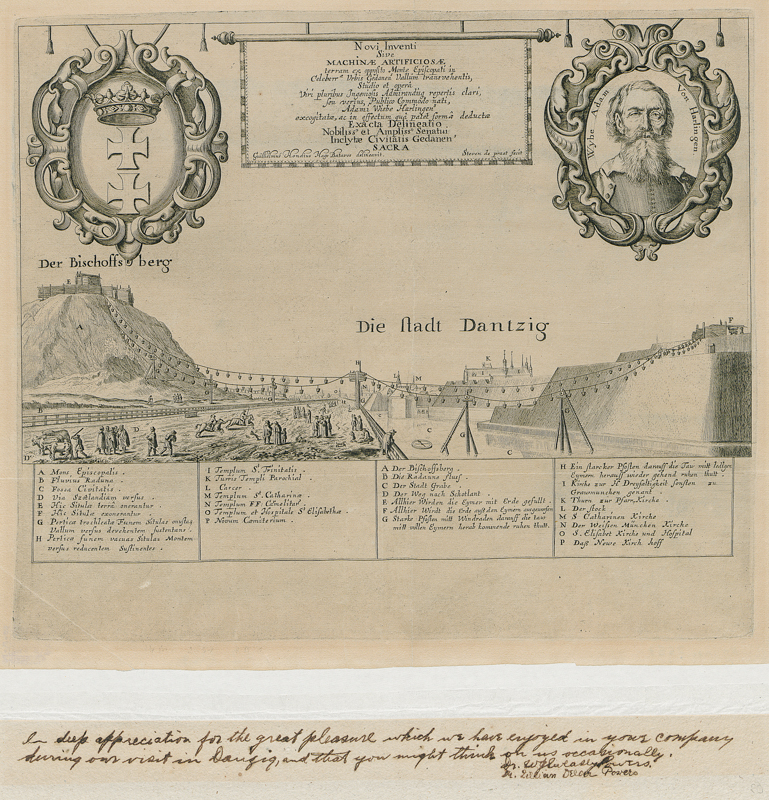Willem Hondius [fig. 1] came from a family of Dutch artists known in Europe in the 17th century. He learned the arcane of graphic art in the workshop of his father Hendrik Hondius, senior (1573–1650). He made copperplate engraving, in which he achieved mastery. His works are characterized by a varied line (from delicate, layered hatching to sharp, deep cuts), giving valuable tones and harmonious chiaroscuro. In drawing he used a silver stylus and a pencil. He made portraits of personalities, maps, topographic views, battle plans, occasional and allegorical engravings, and book illustrations.
In his native Netherlands, he etched, among others, images of members of the Nassau family: Maurice Orange and his son Wilhelm. He collaborated with the Flemish painter Anton van Dyck (1599–1641), one of the most outstanding students of Peter Paul Rubens (1577–1640), engraving portraits of famous figures for his Iconography, including his own portrait. In 1629, as a member of the guild in The Hague, he was awarded the title of the privileged engraver of the Netherlands. A few years later, in 1636, he moved to Gdańsk, where he enjoyed great recognition, receiving orders from the City Council. In 1637, based on the plans of the engineer and cartographer Jan Pleitner and the account of the royal secretary, Marcin Opitz, he made for Władysław IV Vasa perspective views and plans for the siege of Smolensk in the years 1633-1634, which he decorated with many scenes from his military life. In 1641 he received the title of a royal engraver. This granting was later confirmed by John II Casimir.
In Gdańsk, he became famous as a portrait painter and cartographer. From under his stylus there were created by nature, based on his own and foreign compositions (by Daniel Schultz, Steven de Praet, Peeter Dankers de Rij, among others) images of members of the royal court: Władysław IV, Cecylia Renata, Jan Kazimierz, Ludwika Maria and Karol Ferdinand Waza and numerous portraits of Polish personalities: Bohdan Chmielnicki, Jan Karol Chodkiewicz, Adam Kazanowski, Andrzej Leszczyński, Jerzy Ossoliński, Janusz Radziwiłł and Lew Sapieha.
In 1644 he prepared a composition depicting the Gdańsk cable car, which was constructed by Adam Wijbe (Wiebe). It transported soil from Biskupia Górka (in over a hundred baskets) for the construction of the Przedmiejskie Bastion (Berg Bastion) in the vicinity of the Church of St. Of the Trinity [fig. 2]. The following year, the Wieliczka salt mine plans and views of the individual seams were created based on the measurements of the foreman and geometer Marcin German, commissioned by Adam Kazanowski. In 1650 he made a map of the Polesie marshes according to drawings by Daniel Zwicker, which has survived to this day only in two copies. He collaborated and was friends with the outstanding royal cartographer and fortifier Wilhelm Le Vasseur de Beauplan and he made maps of Ukraine (Delineatio generalis …, 1648; Delineatio specialis et accurata …, 1650), a small map of Poland from 1652 and maps of the lands of Ukraine on the basis of his measurements.
(compiled by J. Lijka)


